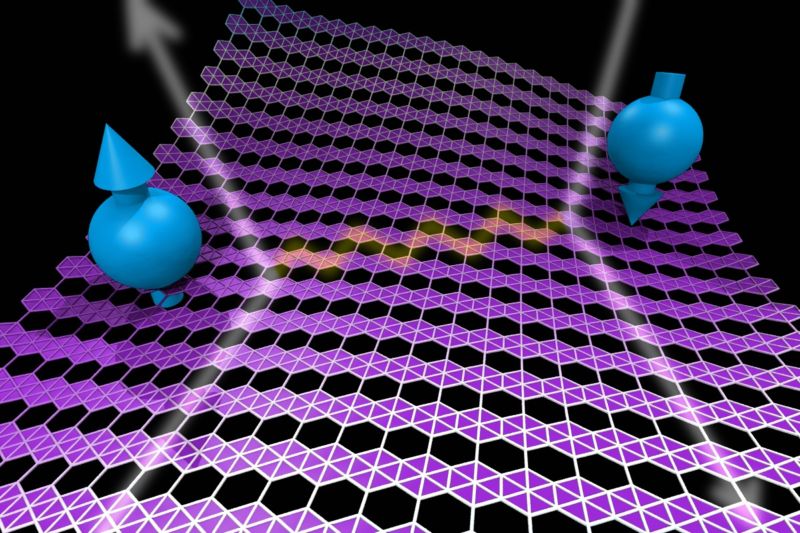
Superconductivity came with a lot of unfulfilled promises. Power without loss? Sign me up. Superconducting magnetic resonance imaging magnets? They're, ahem, cool. And CERN couldn’t operate without buckets of liquid helium to keep its magnets superconducting.
But those examples highlight the problem: pretty much all practical applications for superconductivity require liquid helium temperatures. The search for high-temperature superconductors has taken us to many weird places, including strange substances that only form at high pressure. Now we can add another of those substances to the list: a hydride that only forms under protest. Once formed, though, it may be a superconductor way above room temperature.
Why are we still looking for superconductors?
The search for superconductors goes on because current superconductors come with a number of challenges. If the magnetic field is too strong, superconductivity vanishes. Likewise, if the current density exceeds a certain limit, the resistance appears, which heats the conductor, leading to rapid—and rapidly expanding—failure. And the liquid helium needed to keep things cool in the first place is expensive.
Low-temperature metallic semiconductors are not the only game in town, though. There are certain ceramics that become superconductive at much higher temperatures. For these materials, you only need liquid nitrogen, which is much cheaper than liquid helium. There are even industrial processes for creating bendable superconducting wires from these ceramics.
But you won’t find power transmission lines made of superconducting ceramics, as maintaining a steady supply of liquid nitrogen is a real challenge. High-temperature superconductors haven’t captured the market in MRI magnets, either—the magnetic fields are too strong for them. Even though superconductivity might start at 77K, the magnet still has to be operated near 4K using liquid helium to withstand the effects of the magnetic field. So you might as well use a cheaper metallic wire and be done with it.
Enter hydrides
Hydrogen is a very simple element. But it's also weird. It should be a metal, but once solidified, it isn’t. It’s predicted to become metallic at high pressures—and maybe even become a superconductor. The observations for these states are still controversial, though. Hydrides, on the other hand, combine the best of both worlds. Metal atoms will often bond quite nicely to hydrogen. Depending on the materials and the hydrogenation state, a hydride may flip between conducting and non-conducting. If enough hydrogen is added, a hydride may even become superconducting.
The trick is getting the metal to accept being linked to all those extra hydrogens—as an example, we are talking about a lanthanum atom with 10 hydrogen atoms attached. To do that requires high pressure; otherwise, all the hydrogen escapes. Making a superconductor from a hydride is generally the worst of both worlds—to create your superconducting material, you need pressures in the area of hundreds of GigaPascals, and you also need temperatures somewhere between liquid nitrogen and liquid helium.
On the positive side, there are so many hydride combinations that we haven’t yet exhausted all the possibilities yet. To explore this space, a group of researchers took a lithium/magnesium alloy and started calculating how its properties change as hydrogen is added. They found several stable phases from LiMgH2 through to LiMgH16. Once the researchers had found all the potentially stable hydrides, they started examining their electronic properties.
The researchers were looking for the coupling between electrons and a type of sound wave, called a phonon. Superconductivity requires that electrons pair up, as the pairs then form a kind of extended object that can move without resistance. The pairing is communicated through phonons.
So to achieve superconductivity, electrons need to easily generate and absorb phonons. In LiMgH16, the researchers found a hydride with exceptionally strong coupling. When the researchers calculated the temperature at which LiMgH16 would superconduct, they found it to be a remarkable 350K (77°C). Unfortunately, LiMgH16 only happens to be stable at a pressure of about 250GPa.
It’s still a really interesting finding, because there are so many different hydride possibilities out there. Although 250GPa is too high for practical use—it may even be too high to allow for an experimental demonstration of superconductivity—it points toward the sorts of structures that are required to achieve superconductivity in hydrides. Other hydrides, maybe ones that involve three metals, might require lower pressures to be stable and may even superconduct at reasonable temperatures.
Physical Review Letters, 2019, DOI: 10.1103/PhysRevLett.123.097001 (About DOIs)
reader comments
102